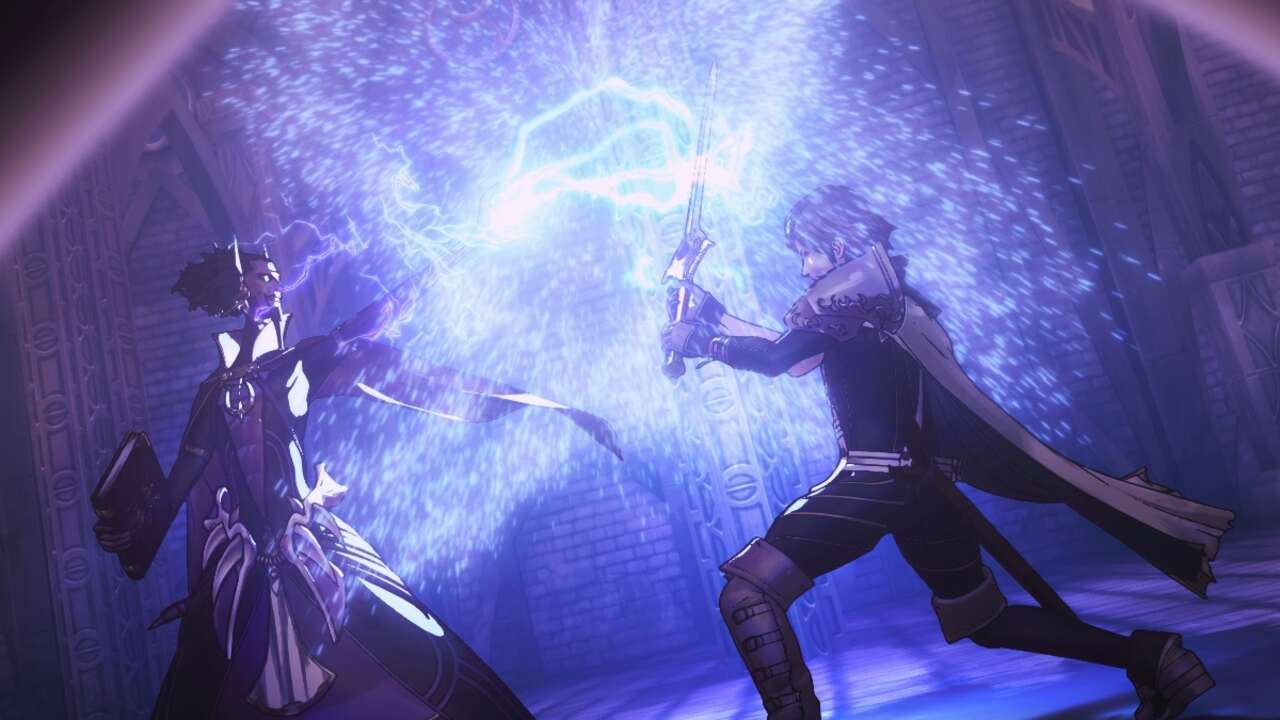Fire Emblem Awakening Saved The Series, And Reshaped It–For Better Or Worse
Fire Emblem Awakening is celebrating its 10-year anniversary today, February 4, 2023. Below, we take a look at how a strict sales mandate from Nintendo almost spelled doom for the series, until it didn’t.
Even among Nintendo’s collection of top-tier IPs, Fire Emblem stands as one of the strongest. Announcements of new Fire Emblem titles frequently headline Nintendo’s beloved Direct presentations, where they are received with a flurry of excitement and anticipation. But things weren’t always this good for the Fire Emblem series. In fact, around a decade ago, Nintendo was ready to toss Fire Emblem into its vault of forgotten franchises. But in an amazing turnaround, the game that developers feared might be the final Fire Emblem, Fire Emblem Awakening, turned into the series’ savior–though the influence it’s had on the series over the past decade is not without some controversy.
According to a 2013 interview in Spanish publication Hobby Consolas, The Fire Emblem series had been declining in popularity during the Wii and DS era, and leaders at Nintendo told the team and co-developer Intelligent Systems that the series would be shelved if the new game didn’t sell at least 250,000 copies. With the knowledge that this might be the last Fire Emblem game in mind, the developers came up with some truly wild ideas, including the possibility of setting the game in the modern-day world, and even on Mars. Ultimately, however, the team stuck with a traditional fantasy setting. They then decided to look at story and gameplay elements that had been received positively in previous FE games for ideas about what to implement and build upon.
History of Fire Emblem
Please use a html5 video capable browser to watch videos.
This video has an invalid file format.
Sorry, but you can’t access this content!
Please enter your date of birth to view this video
By clicking ‘enter’, you agree to GameSpot’s
Terms of Use and Privacy Policy
Awakening’s story treads familiar territory for Fire Emblem, but includes many of the elements that made the previous narratives memorable: struggles between opposing nations, mysterious artifacts of hidden power, a dark force manipulating behind the scenes, and some extremely powerful and sometimes-humanoid dragons. Taking control of your player-controlled character, you join up with Chrom, prince of Ylisse, and his band of vigilantes protecting the populace from the dangerous bandits and creatures that roam the land.
Two crucial “new” features were also visible from the very beginning of the game. Upon starting, players could name and customize a playable avatar character unit, who is of crucial importance to the story. You also had the option of selecting a “casual” difficulty setting that altered an element some players considered essential to Fire Emblem: permadeath. In previous games, units killed in battle were forever lost, but casual mode would auto-revive them at the end of battle. Getting a primary unit killed off was still an instant Game Over, but this mode helped take a lot of the pressure out of the game’s more challenging encounters for less experienced strategy/RPG players–and removed the fear of losing your favorite character to a stray critical hit.
While these gameplay additions were new to players outside of Japan, they actually weren’t introduced in Awakening: Both the customizable player unit and the Casual Mode debuted in the previous Fire Emblem game, a remake of Mystery of the Emblem for the Nintendo DS. But since that game wasn’t released outside of Japan, Fire Emblem Awakening was many overseas players’ first experience with these features, and their reception proved to be very positive–so much so that they have been carried over to most of the main Fire Emblem games released since.
But the biggest impact Fire Emblem Awakening would leave on the series involves not the tactical gameplay, but the characters. Taking heavy inspiration from the fourth Fire Emblem game (the as-of-yet-unlocalized fourth game, Genealogy of the Holy War), Awakening put a heavy emphasis on building inter-character relationships. By setting up units to fight close to or directly with each other during combat, they would build a rapport. After battle, you could choose to view support conversations where the two characters grow closer to each other, raising their support level. This provided tactical benefits in battle–pairing up two units directly gives stat boosts and benefits like damage nullification. But perhaps even more importantly to a lot of players, this allowed you to pair up characters in romantic relationships of your choosing. You’d even get a chance to meet and recruit the children of your carefully crafted couples through time-travel shenanigans.
Support conversations and their accompanying combat benefits have existed in Fire Emblem for quite some time, and paired unit couples having children is a concept present in the aforementioned FE4. But the emphasis put on Supports and romance in Awakening–even allowing you to pair off your avatar with your dream waifu/hazubando–was unlike anything that had come before in the series. And this focus proved tremendously successful for Awakening, bringing in new fans who were unfamiliar with Fire Emblem and strategy games in general. It’s not hard to see why this worked so well: “Shipping” characters together has been a thing in media fandom since time immemorial, and Awakening both outright encouraged it and rewarded you for it, both gameplay- and story-wise. It’s not a stretch to say that Awakening’s success was in large part due to its appeal to an audience more interested in hooking units up than deep strategic planning.
Awakening’s glowing reviews and retail reception had more than just saved the series: It had single-handedly turned Fire Emblem into a powerhouse franchise again, this time on a global scale. Awakening’s success would have far-reaching effects on the main Fire Emblem series as a whole from this point on–but not all of the longtime fans would be happy with it.
Fire Emblem Engage Review
Please use a html5 video capable browser to watch videos.
This video has an invalid file format.
Sorry, but you can’t access this content!
Please enter your date of birth to view this video
By clicking ‘enter’, you agree to GameSpot’s
Terms of Use and Privacy Policy
Recognizing how well the heavy emphasis on character relationships in Awakening went over, the developers would go heavy on this newfound focus for the next installment, Fire Emblem Fates, which featured not one but two warring kingdoms filled with units to play matchmaker with, each with their own (sold separately) campaign and a third DLC campaign to play. However, Fates’s reception proved more mixed. Reviews and sales were very strong, but some players (me included) found the gameplay portions disappointing, the story an absolute mess, and the whole thing overly long and bloated. Fanservice, however, was cranked up to 11, to the delight of many–but the handful of voices from longtime series fans that had bemoaned the loss of focus on tight strategy gameplay became noticeably louder.
Since then, Fire Emblem has walked a delicate tightrope of balancing rewarding strategy gameplay with the popular relationship and social aspects Awakening established. Fire Emblem Echoes and the recent Engage, which put more emphasis on the strategy/RPG elements, were viewed as disappointing to some players and critics who came to enjoy the relationship focus of previous titles, but were welcomed by others who preferred these elements as more of a bonus than a primary focus. But Fire Emblem: Three Houses, a critically beloved title and the best-selling game in the series so far, was another entry that heavily pushed character relationships to the forefront. It’s clear that, despite how some old-school fans might feel, social elements help make the series’ games special to modern players. The way Awakening has transformed this genre-defining franchise has cemented its legacy for years to come.
The products discussed here were independently chosen by our editors.
GameSpot may get a share of the revenue if you buy anything featured on our site.
Check out our Latest News and Follow us at Facebook
Original Source







